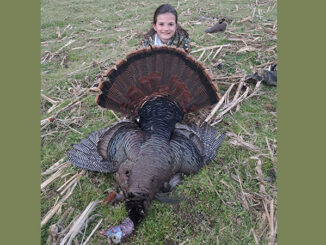
RALEIGH, N.C. – One of the first projects funded through a habitat enhancement program is currently under way on several lakes in western North Carolina.
The N.C. Wildlife Resources Commission, with assistance from local fishing clubs, homeowner associations and other volunteers, began placing nearly 400 “porcupine” fish attractors into lakes James, Rhodhiss, Hickory and Lookout Shoals Reservoir earlier this month.
Fish attractors were purchased through a grant that was awarded to the Commission by the Habitat Enhancement Program (HEP), a cooperative initiative by Duke Energy, the Commission and the South Carolina Department of Natural Resources to enhance, create and protect fish and wildlife habitat along the Catawba-Wateree River basin in North and South Carolina.
The attractors, marked with Commission fish-attractor buoys, are being placed in strategic locations around the lakes to refresh existing fish attractor sites, as well as create new underwater habitat for fish.
So far, 200 attractors have been placed in Lake James and Lake Rhodhiss with the remaining attractors to be placed in Lake Hickory and Lookout Shoals in May. While Commission biologists selected the sites based on the lakes’ need for increased habitat diversity, historic angling location and opportunities for enhancing angling success, they relied on public assistance to place the attractors in the water.
For Lake James, biologists contacted members of the Community of Lake James, asking for their assistance. They showed members how to assemble the attractors, how to sink them and where to place them in the lake.
“The whole process worked great,” said Jacob Rash, a fisheries biologist with the Commission. “We provided members with fish attractors, discussed the number to be placed at each site, and they assembled and deployed the attractors.”
This cooperative effort is a win-win situation for members of the public that have a vested interest in improving lake habitat and fishing opportunities, and for the Commission, which seeks assistance in maintaining and enhancing public resources.
“This project allows us to do work that the public can truly identify with,” Rash added. “Getting the public engaged in a project can give them a real sense of involvement and ownership in the resources that we all care so much about.”
As their name implies, the fish attractors look like giant porcupine quills. PVC pipes are connected to a ball-like sphere, forming a circular structure, which measures about five feet in diameter. Multiple attractors are placed together so that the pipes overlap to increase habitat complexity and provide cover and refuge for a variety of fishes. In time, algae and plankton should grow on attractors, concentrating even more fish in one area.
In addition to the fish-attractor project, other habitat enhancement projects funded through the HEP include planting beneficial aquatic vegetation and installing Osprey nesting platforms.
Nonprofit organizations and individuals associated with nonprofits who want to enhance, create and protect fish and wildlife habitat along the Catawba-Wateree River basin may be eligible to receive a grant through the HEP.
Parties interested in seeking funds from the HEP are encouraged to complete an application found at http://www.duke-energy.com/lakes/habitat-enhancement-program.asp and submit it by July 31 for this year’s selection.




Be the first to comment